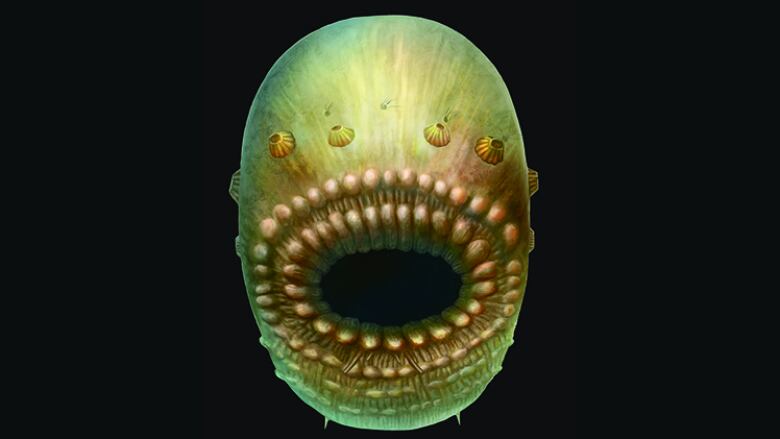Tiny, bag-like fossil creature could be early human ancestor
Smaller than a grain of rice, creature lived 540 million years ago

Scientists have discovered a tiny, bag-likeprehistoric creature that lived 540 million years ago and could be an ancient ancestor of ours.
The prehistoric creature, Saccorhytus,was discovered in microfossils found in rock in Shaanxi province in central China.
- Feathered dinosaur tail found trapped in amber
- 'A cross between a hallucinogenic dream and your worst nightmare': Rare dinosaur prints found in B.C.
It's believed that this new species is the most primitive example of a deuterostome,a category in biology that includes many sub-groups, including vertebrates such as ourselves.
"Frankly, it doesn't look like anything very exciting; it looks like a tiny dot, a bit smaller than a grain of rice. But in the electron microscope, it's just eye-popping,"Simon Conway Morris, a professor and fellow of St. John's College, Cambridge, who authored the paper, told CBC News.
Clues linking to humans
The fossils, which were exquisitely preserved, were found in limestone three tonnes of it that was broken down into very small pieces allowing researchers to study them under electron microscopes.
"The sheer fidelity of the preservation, the quality of the preservation is astonishing," Morris said.

Saccorhytus which means "wrinkled bag" was just about one millimetrein sizewith an elliptical body and large mouth.
One of the things thatdeuterostomesshare is gill slits, and the researchers found that theSaccorhytushad small conical features believed to be the precursors to gills. That's where excess water and possibly waste was expelled.The researcherscouldn't find any sign the creature had an anus.
The molecular clock
Scientists look at genetic information of related species to see when they diverged. They believe that the process occurs in aclock-like fashion. However, there isn't much evidence for the time period before the Saccorhytus.
The finding provides some support to the theory of the molecular clock: evidence of creatures that existed earlierand were smaller than the Saccorhytusmay never be found.
Morris saidthis discovery doesn't mean they've foundour earliest human ancestor, but it is still exciting.
"This is our best glimpse of what we would regard as not thefirst deuterostome but one of the early examples," he said.
The findings werepublished in the journal Nature.












_(720p).jpg)


 OFFICIAL HD MUSIC VIDEO.jpg)
.jpg)



























































































